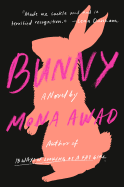
| Publisher: | Viking | |
| Genre: | Humorous, Black Humor, Fairy Tales, Folk Tales, Legends & Mythology, Literary, Fiction | |
| ISBN: | 9780525559733 | |
| Pub Date: | June 2019 | |
| Price: | $26 |
| Fiction |
by Mona Awad
Mona Awad's twisted and hilarious follow-up to 13 Ways of Looking at a Fat Girl expands on classic Queen Bee tropes by transporting them to a setting even more cruel, petty and backbiting than high school--graduate school. In Bunny, a brooding and beleaguered scholarship student must contend with the punishingly effervescent members of her all-female creative writing cohort, discovering to her horror that their fawning affect and carefully curated personas mask a deadly supernatural persuasion.
Struggling through the final year of an elite postgraduate program with which she has long felt disenchanted, Samantha Mackey finds that her passion for writing has been supplanted by repulsed fascination for the other four members of her group. Disgustingly rich, unbearably twee and virtually inseparable, they refer to each other as "Bunny," a habit that Samantha finds grotesque. Assuming her disdain is mutual, Samantha is shocked when the "Bunnies" reach out to befriend her, beckoning her into their candy-colored and tulle-embellished private circle. What seems like a frivolous escape, however, quickly becomes a hallucinatory nightmare, as the balance of power shifts, and lines between fantasy and reality begin to blur.
Awad's flair for the provocative occasionally veers into self-conscious grandstanding (her protagonist, too, is criticized for the "edginess" of her prose). Still, Bunny's gleeful, unapologetic revelry in fantastical revenge play is seductive, gripping and gloriously excessive. Steeped in rank feminine pathos and dripping with psychedelic horror imagery, Bunny is a campy deconstruction of neofeminist artifice, academic class blindness and the sugar-frosted exclusionism they both serve up with an eager, sharp-toothed smile. --Devon Ashby, sales & marketing assistant, Shelf Awareness
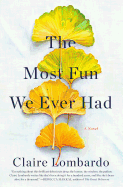
| Publisher: | Doubleday | |
| Genre: | Women, Family Life, General, Literary, Fiction | |
| ISBN: | 9780385544252 | |
| Pub Date: | June 2019 | |
| Price: | $28.95 |
| Fiction |
by Claire Lombardo
In her debut, Claire Lombardo offers a sprawling drama that explores the maelstrom of love, resentment and tension of the nuclear family and the ways in which a shared history can affect the future for years.
When Marilyn Sorenson, exhausted by raising two babies nine months apart in age, gives a patently untrue reply to a question about motherhood, it instantly becomes one more inside joke she shares with her husband, David. "They would repeat it for years to come in times of strife: the most fun I've ever had." The joke follows the Sorensons from 1980 to 2016, the year in which their four adult daughters wreak havoc on their peace of mind in a whirlwind of existential crises, relationship drama and long-buried secrets. As fissures in the family open, close and shift, David and Marilyn look back on their legendary marriage and the joy and heartache inherent in loving the same person for decades.
Lombardo has a deft hand with metaphor, pulling off the inclusion of a literal family tree--a venerable but diseased gingko--with neither camp nor irony. She also has a knack for encapsulating universal relationship truths in single clear-eyed sentences, as when she describes the situation of "one party consumed with worry so the other could sleep through the night" as a life-saving aspect of marriage.
Covering 40 years of Sorenson family strengths and foibles, The Most Fun We Ever Had is a classy but juicy read that always has one more surprise up its sleeve. --Jaclyn Fulwood, blogger at Infinite Reads
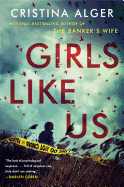
| Publisher: | Putnam | |
| Genre: | Psychological, Women, General, Thrillers, Fiction | |
| ISBN: | 9780525535805 | |
| Pub Date: | July 2019 | |
| Price: | $26 |
| Mystery & Thriller |
by Cristina Alger
Cristina Alger (The Banker's Wife, This Was Not the Plan) crafts a gripping story of suspense with Girls Like Us. Fans of murder mysteries packed with action and plot twists will be satisfied by this edge-of-the-seat adventure into seedy Suffolk County in New York.
FBI Agent Nell Flynn has returned home to the unbeautiful end of Long Island to sprinkle her father's ashes, close up his house and move on. Her father, homicide detective Marty Flynn, had some good buddies on the force, and it's nice to see them again, but Suffolk County doesn't hold many pleasant memories. Then Marty's last partner, Lee Davis, with whom Nell went to high school, asks for her help on one last case. Two young women have been murdered: "working girls," the cops call them; one of them was undocumented. In their details, though, these murders take Nell back to the murder of her mother when Nell was seven years old.
Is there a serial killer at work in Suffolk County? Is there a link to Nell's past? With violent action and split-second turns, this is not a book to put down easily: plan accordingly. Alger's thriller is emphatically plot-driven, but her characters hold their own.
Nell is a quintessential damaged cop, even if she is FBI: ignoring her own injuries, pushing too hard, taking foolhardy risks, with a strong sense of right and wrong (as her father seemed to have). Her personality serves as backbone to the electric plot of Girls Like Us, and the reader trusts that she will follow through to the truth, no matter how much it hurts. --Julia Kastner, librarian and blogger at pagesofjulia
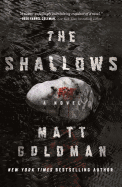
| Publisher: | Forge | |
| Genre: | Private Investigators, Mystery & Detective, Crime, Thrillers, Fiction, Jewish | |
| ISBN: | 9781250191311 | |
| Pub Date: | June 2019 | |
| Price: | $26.99 |
| Mystery & Thriller |
by Matt Goldman
Minneapolis private investigator Nils "Shap" Shapiro returns in his third outing by being called to a murder scene at 3:27 a.m. Lawyer Todd Rabinowitz has been killed, his body left in the shallows of a lake with a fishing stringer through his mouth and the other end tied to the dock. It's a clear message to someone, but no one knows what.
Todd's wife, Robin, hires Shap to find the killer, knowing the police would focus only on her, especially since the couple was on the outs and she was having an affair. But she's not the only person who wants to hire Shap to solve Todd's murder. So do the Greater Lake Minnetonka Police Department, the FBI, the partners at Todd's law firm, Robin's boyfriend and a controversial congressional candidate. As the list of potential clients grows, the number of dead bodies almost keeps pace.
In The Shallows, Matt Goldman (Gone to Dust) manages to cover timely issues in a tone both light and mature, without naming names or being didactic. Shap points out people are born with a neurological makeup that dictates what they believe in and arguing won't change anyone's mind. It helps to know the complex history between Shap and his ex-wife, Micaela, but The Shallows can stand on its own. He experiences life-changing revelations here, but seemingly nothing can dampen Shap's wit. Being summoned to a meeting with a partner at Todd's firm, Shap makes sure to leave his shirt untucked "to convey a dash of apathy." Fans of layered mysteries and well-defined characters will convey only delight. --Elyse Dinh-McCrillis, blogger at Pop Culture Nerd
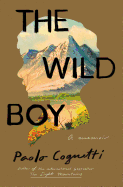
| Publisher: | Atria | |
| Genre: | Biography & Autobiography, Nature, Mountains, Ecosystems & Habitats, Inspiration & Personal Growth, Personal Memoirs, Body, Mind & Spirit | |
| ISBN: | 9781501196713 | |
| Pub Date: | July 2019 | |
| Price: | $16.99 |
| Starred | Biography & Memoir |
by Paolo Cognetti
After turning 30, Paolo Cognetti (The Eight Mountains) felt restless and unfulfilled in the city of Milan. He missed his childhood summers--the first 20 years of his life--spent in the Italian Alps. Inspired by Thoreau's Walden and the principled quest of Chris McCandless (subject of Jon Krakauer's Into the Wild), he rented a renovated but rustic cabin alone in a village of ruins in a high alpine valley and undertook to learn what the mountains had to teach, to "live deep and suck out all the marrow of life." After years of frustration, he hoped to write again.
The Wild Boy is a memoir of three seasons spent in that cabin, or, more accurately, spent hiking and exploring the mountains he remembered from when he was a boy--that wild boy he hopes to find again. It has a lovely and profound story to tell about connections to land and history and one another. In seeking simplicity and a new start in his life, Cognetti rediscovers timeless truths about the human condition.
This is a stunning book: Cognetti's prose is incandescent when writing about nature, about human history, about friendship and, perhaps most of all, about words. For any reader who has wondered about the next step, loved a mountain or a book, struggled with writer's block or stared in wonder into a forest, this astonishing memoir is necessary. --Julia Kastner, librarian and blogger at pagesofjulia
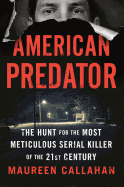
| Publisher: | Viking | |
| Genre: | Biography & Autobiography, True Crime, Serial Killers, Murder, Criminals & Outlaws | |
| ISBN: | 9780525428640 | |
| Pub Date: | July 2019 | |
| Price: | $27 |
| Starred | Social Science |
by Maureen Callahan
On Thursday, February 2, 2012, Samantha Koenig was reported missing by her fellow barista at an Anchorage, Alaska, roadside kiosk. An obscured figure captured on security footage appears to have held the 18-year-old daughter of a local pot dealer at gunpoint for 17 minutes around 9 p.m. the previous night. Due to Samantha's father's criminal past, however, the ensuing investigation first grapples with the possibility that her disappearance was staged for ransom money, before diving headlong into an anxious manhunt in the Lower 48.
Maureen Callahan, the investigative journalist who first pursued this story for the New York Post, crafts a riveting true-crime saga in American Predator: The Hunt for the Most Meticulous Serial Killer of the 21st Century. With an even hand, she details the power struggles between the Anchorage criminal justice system and the FBI as their cooperative efforts close in on the insidious Israel Keyes, who seems to have materialized out of thin air. No criminal history, hardly any record of his existence at all. In an age of quantifiable Internet footprints, Keyes was the closest thing to a ghost that investigators could track down. Their only leads came from dumb luck.
The lion's share of the book places readers in the tense interrogation room as Keyes recounts his chilling crimes, teasing investigators with the far-flung locations of bodies he buried, in exchange for better treatment in prison and protection for his 10-year-old daughter. For years, Keyes cached his trademark "kill kits" around the country, for whenever and wherever his murderous urges came to climax. American Predator reveals a horrifying truth about the human capacity for bloodlust. --Dave Wheeler, associate editor, Shelf Awareness
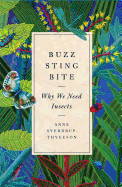
| Publisher: | Simon & Schuster | |
| Genre: | Life Sciences, Nature, Animals, Insects & Spiders, Zoology - Entomology, Science, Biological Diversity | |
| ISBN: | 9781982112875 | |
| Pub Date: | July 2019 | |
| Price: | $26 |
| Science |
by Anne Sverdrup-Thygeson
In light of recent news stories reporting dramatic drops in insect populations around the world, Anne Sverdrup-Thygeson's Buzz, Sting, Bite: Why We Need Insects is an especially vital and timely work. Written by a professor at the Norwegian University of Life Sciences, the book is both witty and informative, a captivating introduction to how creepy-crawlies affect all life on Earth.
The book opens with several chapters on the insects themselves: their biology, their life cycles, the ways in which they organize their communities. The author drops some truly fascinating facts: ants are capable of teaching other ants, she writes. And, incredibly, bees are capable of recognizing specific human faces.
Sverdrup-Thygeson goes on to explore how insects are studied and named--the story of how the Beyoncé horsefly got its name is especially hilarious--and the complex relationships between insects, plants and other animals. The final section is the most poignant and eye-opening. Sverdrup-Thygeson explains in clear and urgent prose how important insects are to human life. Yes, insects are highly adaptable creatures. But through "intensive land use, climate change, insecticides, and the introduction of invasive species," humans have created conditions that are threatening insect populations everywhere. It's our "moral duty," she writes, to "rein in our dominance of the earth" so that "millions of fellow creatures" may have a chance to "live out their tiny, wonderful lives, too." Amusing and thoughtful, Buzz, Sting, Bite reminds us that all life on Earth is connected. --Amy Brady, freelance writer and editor
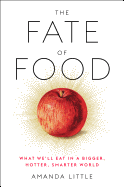
| Publisher: | Harmony/Crown | |
| Genre: | Technology & Engineering, Industries, Agriculture & Food, Agribusiness, Sustainable Agriculture, Business & Economics, Agriculture, Social Science | |
| ISBN: | 9780804189033 | |
| Pub Date: | June 2019 | |
| Price: | $27 |
| Nature & Environment |
by Amanda Little
In every corner of the globe, food supply faces unprecedented threats. Frequent natural disasters such as volatile weather, flooding, famine and drought, along with polluted soil and water and predicted population increases, are only a few factors presenting challenges in feeding the world today and in the uncertain future.
Journalist Amanda Little spent three years traveling to 13 states and 11 countries to observe and understand the promising science and potential solutions for developing and securing sustainable food sources. In The Fate of Food, she recounts visits with Andy Ferguson, a Wisconsin apple farmer focused on data analysis for developing new technology to prevent crop damage. (His orchards lost six million apples--more than $1 million in potential harvest--after a sudden temperature drop one night in May.) In Kenya, Little meets Ruth Oniang'o, a 72-year-old woman using bioengineered seeds as a way to fight famine in her country. In Maharashtra, the second-most populous state in India, Little boards a four-seater prop jet to observe "cloud-seeding," a technique that injects chemical vapor into clouds to stimulate rain in drought-stricken areas.
With its sobering statistics and exploration into unsettling trends such as excessive food waste, The Fate of Food could easily leave readers pessimistic and frightened. But having met many of the most thoughtful and brightest people dedicated to securing the world's food supply, Little doesn't share that view: "My journey so far--into new and strange frontiers of vegetable, fruit, grain, fish and meat production--has convinced me that feeding humanity sustainably in the coming decades will require not just major advances in technology, but also the discipline of applying them wisely and equitably." We are only beginning to harvest the knowledge and technology to do so. --Melissa Firman, freelance writer at melissafirman.com
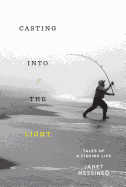
| Publisher: | Pantheon | |
| Genre: | Biography & Autobiography, Women, Mindfulness & Meditation, Body, Mind & Spirit, Sports & Recreation, Fishing | |
| ISBN: | 9781524747640 | |
| Pub Date: | July 2019 | |
| Price: | $26.95 |
| Sports |
by Janet Messineo
Casting into the Light, a memoir of teacher, taxidermist and surfcaster Janet Messineo's 40 years fishing, adds a distinct new voice to the choir of sportswriters. As a girl, she was captivated by the lure of the striped bass, the most prized migratory fish in the Northeast due to the degree of difficulty in catching the crafty ocean night-feeders. Now a respected surfcaster, Messineo spent years teaching herself the sport and breaking into the inner circle of colorful Martha's Vineyard locals.
A fascinating story of fish and their predilections as well, as the high art of the hunt (and sometimes hijinks and tricks of the trade), Messineo's memoir is also intimately personal. She shares her rough beginnings, fishing for food and money while relationships burned and burned out. In no small part due to the restorative influence of the natural world, she continues to conquer her demons.
Messineo never loses sight of the fact that perseverance and dedication to her craft remain at the whim of the fish, the sea and her tools. The dream of landing the big one, whether in the famed Martha's Vineyard Striped Bass and Bluefish Derby or alone on a dark beach, keeps her casting against the odds, her line compulsively in the water. Messineo's voice is passionate and she's an enthralling storyteller concerned about the environment and continuing the traditions of the individual fisherman. Humor, zealousness and adoration more than smooth some minor disjointed thoughts and repetitions, making this memoir a prize catch. --Lauren O'Brien of Malcolm Avenue Review

| Publisher: | Ecco | |
| Genre: | American, Love & Erotica, Death, Grief, Loss, General, Poetry, Subjects & Themes | |
| ISBN: | 9780062914712 | |
| Pub Date: | July 2019 | |
| Price: | $24.99 |
| Poetry |
by James Tate
James Tate (The Lost Pilot), who died in 2015, has given the world one last wondrous poetry collection in The Government Lake. The 43 prose poems in this collection defy easy categorization. Perhaps they're best described as parables for the peculiar moral lessons they impart, but they're especially surreal ones, full of strange characters and dream imagery, bending reality with a nonchalant assurance reminiscent of the great magical realists more than other contemporary poets. Tate is a builder of small whimsical worlds, and the reader must not so much suspend disbelief as surrender all expectations upon entering.
The book opens with "Eternity," in which a man's wife begins laying eggs. Their house becomes populated with chicks until a fox sneaks in and eats them all. After this bizarre occurrence, the couple tries to get back to a normal life. In an ending that's typical of Tate--when the reader is invited to shift perspectives and consider a lesson--the husband minimizes the whole incident until the wife reminds him: "To the chicks it was an eternity." In "Into the Night," a nun spontaneously combusts, only to come back to life. In "The Seahorse," the main character fills with gas and floats off to sea. These events are portrayed as ordinary happenstance, which makes the poems all the more alluring, as if Tate has stumbled upon another dimension hidden in plain sight.
Whether quaintly sweet or unexpectedly sour, The Government Lake is fun to read. Tate is a master of wordplay and varying mood and effect. He is a wizard who will be missed. --Scott Neuffer, writer, poet, editor of trampset
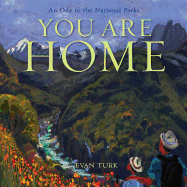
| Publisher: | Atheneum | |
| Genre: | People & Places, Animals, United States, Environment, General, Science & Nature, Juvenile Fiction | |
| ISBN: | 9781534432826 | |
| Pub Date: | June 2019 | |
| Price: | $18.99 |
| Starred | Children's & Young Adult |
by Evan Turk
You Are Home: An Ode to the National Parks begins by honoring the parks' animals: "To the chipmunk in her burrow,/ sleeping beneath the leaves to keep warm;/ to the resilient bison in the streaming oases/ of an endless winter:/ you are home." The book goes on to include the human animal: "To the child in the city,/ surrounded by windows,/ noise, and crowds;/ to the child on the farm,/ surrounded by endless fields;/ you are home," and so on. Finally, the book defines its terms: "A home's walls may topple,/ its floors might crack,/ but what keeps a home standing/ can never be broken:/ a sense of belonging, sung by the streams, from valleys to peaks, over thousands of miles,/ through millions of hearts."
This lyrical tribute demands art to match, and Ezra Jack Keats Book Award winner Evan Turk (Muddy: The Story of Blues Legend Muddy Waters) rises to the challenge. Using pastels on black paper, Turk has created scenes that conjure a range of media: the cloudy sky above Yellowstone's bison has a watercolor-like grace; a vibrant spread devoted to Zion suggests cut-paper collage; and a masterful gatefold capturing Yosemite has a chalky glow. In his author's note, Turk writes that most of the book's illustrations are based on drawings he did while visiting 20 of the 25 featured parks. (The name of each park is unobtrusively printed in the corresponding art's corner.) You Are Home is a gallant rebuke to the expression "You had to be there." --Nell Beram, freelance writer and YA author
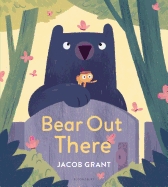
| Publisher: | Bloomsbury | |
| Genre: | Friendship, Animals, Insects, Spiders, etc., Social Themes, Juvenile Fiction, Bears | |
| ISBN: | 9781681197456 | |
| Pub Date: | June 2019 | |
| Price: | $17.99 |
| Children's & Young Adult |
by Jacob Grant
Spider and Bear, housemates since Bear's Scare (2018), are friends, even if they don't always share the same habits.
"Spider loved the outdoors." Today, he wants to fly his new kite--and "the bugs were also nice." Bear, on the other hand, is a stay-at-home type. His ideal day includes cleaning up the house, "followed by a nice cup of tea in his cozy chair." But then, as shown in a sweeping illustration of trees, clouds and one lonely kite sailing into the sky, Spider's kite flies away. The tiny spider asks the huge bear for his assistance and Bear is ready to help his friend, despite his dislike of the forest. Unfortunately, when they venture into the woods, their day goes from bad to worse. At first Bear complains about everything--"Who would want to smell so many yucky weeds?" "Who would ever want to see such an unpleasant forest?"--even though it is clear through illustration that Spider really enjoys these experiences. When it starts raining, Bear is ready to give up, but the sight of his forlorn friend inspires him to continue the search.
Jacob Grant's (Through with the Zoo) charcoal, crayon, ink and digital illustrations use a predominantly green and brown palette with pops of yellowy orange and mauve. There is a surprising fluidity to Grant's forms, which are solid and blocky, with fully saturated colors, perhaps showing themselves to be as steadfast as Spider and Bear's friendship. Though the two still have different hobbies, the last wordless spread demonstrates how they find a way happily to share their favorite pastimes, creating a model for children with different interests to find ways to spend time together. --Melinda Greenblatt, freelance book reviewer